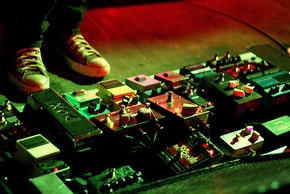Regardless the type of music a particular guitarist might enjoy most, he or she likely will need one or more effects pedals to produce a wider range of sounds and possibly help land more studio gigs. You can pair these with great guitar reverb pedals to your liking or get the dry signal out straight to your amp. Having a good delay or reverb pedal can make the biggest difference in certain situations.Guitarists can find great deals on effects pedals, and here is a look as some of the best ones.
That Funky Little Crybaby Wah Pedal
The Crybaby Wah is one of the first and still the best examples of a wah pedal that creates those distinctly funky tones heard from the likes of Jimi Hendrix to Parliament-Funkadelic and more. Used heavily in funk, blues, rock and psychedelic music, the wah pedal is one of the first and in some cases the only pedal guitarists learn to use. The simple and highly durable construction makes the Crybaby Wah one of most iconic wah pedals on the market while also being very easy to master with its gas pedal-like simplicity.
Creating Ibanez Tubescreamer Tones
The Ibanez Tubescreamer is the most successful overdrive pedal ever manufactured and was a mainstay of Stevie Ray Vaughan and other blues-rock legends who wanted to replicate the warmer, fuzzier tones of all-tube amps with their more powerful and reliable transistor combo amplifiers. The Tubescreamer is solidly built and offers outstanding tonal control with its three-way adjusters.
Fabulous Big Muff Fuzz
The Big Muff Fuzz is possibly the most popular fuzz box-style distortion pedal ever made and has been used by some of the most famous rock artists of all time, including Jimi Hendrix, Pink Floyd, Frank Zappa and Carlos Santana. First offered in the 1969, the Big Muff offers three-way control of volume, tone and sustain to create very long-sustaining notes combined with a low, crackling, fuzzy tone long since sought after by many highly influential rock guitarists.
Phaser Pedals Set for Stunning
A phaser effects pedal splits the sound produced by a guitar into two audio paths that can enhance or play off of one another to create many subtle textures and tones that were most popular with many ’60s-era psychedelic guitarists as well as many funk and rock guitarists of the 1970s. Brian May of Queen and Eddie Van Halen helped to keep phaser pedals popular.
No matter which kind of guitar playing someone prefers, there are guitar effects pedals that can help them to find their own distinctive sounds and tones. And more tools mean more paying gigs for professional guitar pickers.
Information Source: Moore Music

